Hosted by TruLight Ministries – The Place of Truth

Tomorrow is not Promised to anyone / Moreoggend is aan niemand belowe nie !!
Take the Steps to Heaven Today / Neem die Stappe na die Hemel vandag !!

Dieselfde liedjie 3 keer deur verskillende kunstenaars
Pastor Dirk’s Triple Play – I’ve Never been this Homesick before – Dudley Smith , Jimmy Swaggart with John Starnes and Jason Grabb
Coming in June 2025 to this APP
Healing Articles and Prayers

Bible Verse and Prayer for Today;

And he led them out as far as to Bethany, and he lifted up his hands, and blessed them. And it came to pass, while he blessed them, he was parted from them, and carried up into heaven.
Luke 24:50-51
Prayer
Lord . Yesterday we Celebrated Ascension day . Today we are looking at the clouds Again , When will you come to collect Your Bride . Come Lord Jesus . Please Come . we Pray in Faith . Amen and Amen
Bybel Vers en Gebed vir Vandag
En Hy het hulle uitgelei tot by Betanië, en Hy het sy hande opgehef en hulle geseën. En terwyl Hy hulle seën, is Hy van hulle geskei en na die hemel opgeneem.
Lukas 24:50-51
Gebed
Here. Gister het ons Hemelvaartdag gevier. Vandag kyk ons weer na die wolke. Wanneer sal U kom om u bruid te kom haal? Kom, Here Jesus. Kom asseblief. Ons bid in geloof. Amen en Amen.
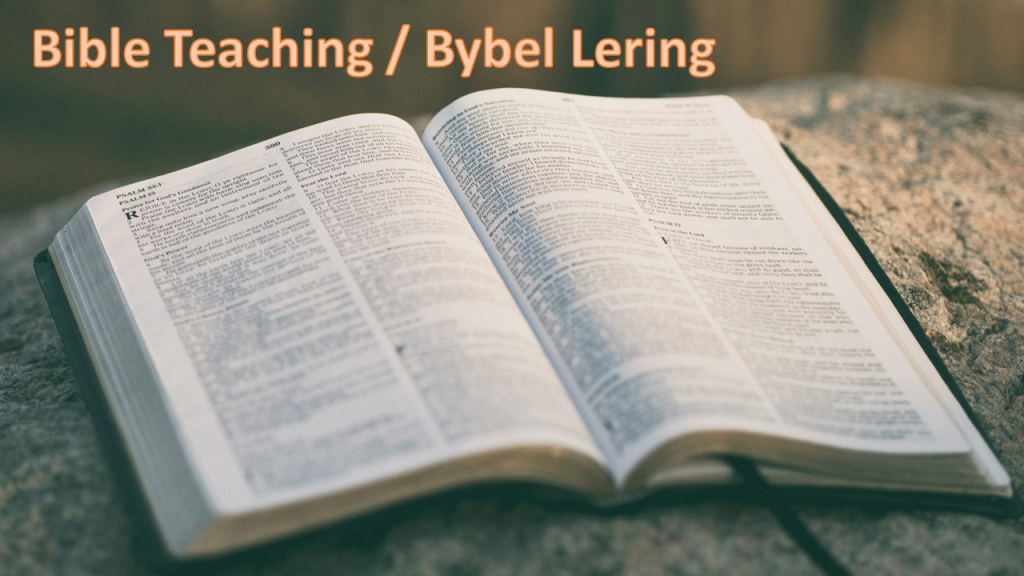
Bible Teaching of the Day
Ascension Day is the celebration of Christ ascending into heaven after His death, burial and resurrection. Ascension Day is observed primarily in Catholic and Anglican churches, and it occurs on the Thursday 40 days after Easter. Ascension Day is also called the Feast of Ascension.
The story of Jesus’ Ascension is told in Luke 24:50-53, Mark 16:19 and Acts 1:3, 9. Putting these accounts together, we find that after His resurrection, Jesus appeared several times to His disciples and others. During this time, He spoke to them further about the kingdom of God and the coming of the Holy Spirit, for whom they were to wait (Acts 1:2-9). After 40 days of these appearances, He was taken up to heaven for the last time (Acts 1:9-11). As the disciples watched Him go, two angels appeared and declared to them that, just as He ascended, Jesus would return in glory.
According to one of the early church fathers, Augustine of Hippo, the Feast of Ascension originated with the Apostles. It may be one of the oldest feasts practiced by the Church, possibly going as far back as AD 68. There is no written evidence, however, of the church honoring Ascension Day until Augustine’s time in the fourth century. Churches around the world have observed Ascension Day Feasts for centuries, including ceremonies and traditions including processions, prayer vigils, and Catholic masses.
Whether or not we actually celebrate Ascension Day, its significance is that it reminds us that the glorious and triumphant return of Christ is near. It is a reminder of the Kingdom of God within our hearts, and of the ever-present Holy Spirit, watching over and protecting us as we spread the light of Jesus’ truth throughout the world. The fact that Jesus was resurrected from the grave and ascended to the right hand of the Father is the source of our hope (1 Peter 1:3). We know that those who belong to Him by faith will one day be with Him in heaven.
Bybel Lering vir die Dag
Hemelvaartdag is die viering van Christus se hemelvaart na Sy dood, begrafnis en opstanding. Hemelvaartdag word hoofsaaklik in Katolieke en Anglikaanse kerke gevier, en dit vind plaas op die Donderdag 40 dae na Paasfees. Hemelvaartdag word ook die Fees van Hemelvaart genoem.
Die verhaal van Jesus se Hemelvaart word vertel in Lukas 24:50-53, Markus 16:19 en Handelinge 1:3, 9. As ons hierdie verslae saamvoeg, vind ons dat Jesus na Sy opstanding verskeie kere aan Sy dissipels en ander verskyn het. Gedurende hierdie tyd het Hy verder met hulle gepraat oor die koninkryk van God en die koms van die Heilige Gees, vir wie hulle moes wag (Handelinge 1:2-9). Na 40 dae van hierdie verskynings is Hy vir die laaste keer na die hemel opgeneem (Handelinge 1:9-11). Terwyl die dissipels Hom sien weggaan het, het twee engele verskyn en aan hulle verklaar dat, net soos Hy opgevaar het, Jesus in heerlikheid sou terugkeer.
Volgens een van die vroeë kerkvaders, Augustinus van Hippo, het die Fees van Hemelvaart by die Apostels ontstaan. Dit mag een van die oudste feeste wees wat deur die Kerk beoefen is, moontlik so ver terug as 68 n.C. Daar is egter geen geskrewe bewyse dat die kerk Hemelvaartdag vereer het tot Augustinus se tyd in die vierde eeu nie. Kerke regoor die wêreld het Hemelvaartdagfeeste al eeue lank onderhou, insluitend seremonies en tradisies soos optogte, gebedswake en Katolieke misse.
Of ons nou Hemelvaartdag werklik vier of nie, die betekenis daarvan is dat dit ons herinner dat die glorieryke en triomfantlike wederkoms van Christus naby is. Dit is ‘n herinnering aan die Koninkryk van God in ons harte, en aan die alomteenwoordige Heilige Gees wat oor ons waak en ons beskerm terwyl ons die lig van Jesus se waarheid regoor die wêreld versprei. Die feit dat Jesus uit die graf opgewek is en opgevaar het na die regterhand van die Vader, is die bron van ons hoop (1 Petrus 1:3). Ons weet dat diegene wat deur geloof aan Hom behoort, eendag saam met Hom in die hemel sal wees.
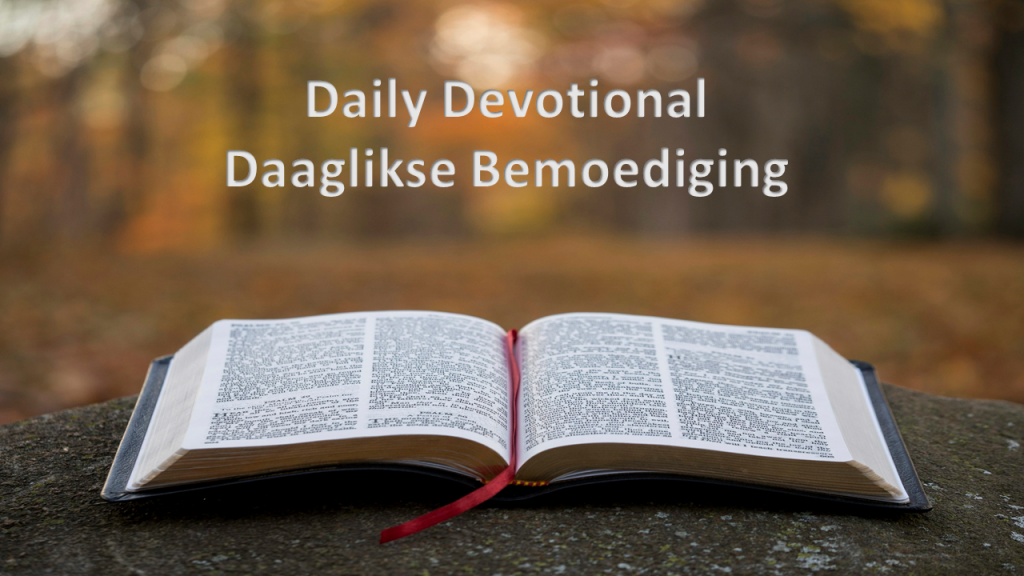
Today’s Devotional
Jesus Christ often taught using parables, and just like His disciples, modern readers sometimes need help decoding the comparisons they make. In the Parable of the Wedding Feast, Jesus compared the kingdom of God to a wedding feast for a king’s son. A pivotal scene in the story focuses on the improper attire of a guest and his subsequent punishment. The interpretation of the parable that aligns best with Jesus’ articulation of its main point, which other Scripture supports, is that the wedding garment represents the righteousness of Christ.
The Parable of the Wedding Feast consists of two scenes, and together they provide important context for understanding the meaning of the wedding garment. In the first scene, the king sent his servants to summon selected guests to the banquet, but they ignored the invitation as some returned to work and others mistreated and killed the servants. This part of the parable represents Israel’s collective rejection of Jesus as the Messiah. Consequently, the king punished the killers and destroyed their city. Then, depicting the inclusion of the Gentiles into God’s plan for the ages, the king expanded the banquet invitation to anyone his servants could find, resulting in “both bad and good” guests attending the banquet (Matthew 22:1–10, ESV).
The second scene of the parable describes a guest wearing improper clothing: “But when the king came in to look at the guests, he saw there a man who had no wedding garment” (Matthew 22:11). When the king asked him about his clothes, the man was speechless, indicating he didn’t have an excuse. In response, the king instructed his servants to tie the man up and “cast him into the outer darkness,” where “there will be weeping and gnashing of teeth” (Matthew 22:12–13).
There are three primary reasons why the best interpretation of the wedding garment is that it represents the righteousness of Jesus. The first comes from the lesson of the parable, found in Jesus’ words at the conclusion: “For many are called, but few are chosen” (Matthew 22:14). The word translated as “chosen” comes from the Greek word eklektos, meaning “select ones,” and refers to sinners Jesus has saved. This is the second time Jesus uses the word in Matthew; the first was when He described those who know the Father as the ones “whom the Son chooses” (Matthew 11:27). Additionally, the word eklektos is translated as “elect” later in Matthew (Matthew 24:22, 24, 31) and as “chosen” or “elect” elsewhere in the New Testament (Romans 8:33; 16:13; Luke 18:7; 1 Peter 2:9). Thus, Jesus implies the man’s improper attire signifies that he wasn’t among the chosen few.
Second, since the king in the parable represents God, and its lesson, according to Jesus, distinguishes between those who are invited to the banquet and those who are chosen, the best interpretation of the invitation is that it symbolizes the gospel proclamation. Since a parable is an elaborate simile, it’s helpful to apply the analogy of faith—using Scripture to interpret Scripture—to fully understand the comparison. Accordingly, other New Testament passages teach that sinners are reconciled with God through the gospel, which proclaims that those who respond in faith have the righteousness of Jesus imputed (i.e., transferred) to them. Paul further explains that, at conversion, God transfers a person’s sin to Jesus and Jesus’ righteousness to that person (2 Corinthians 5:21). Further supporting the interpretation that the wedding garment symbolizes Jesus’ righteousness is the association of righteousness and clothing in other passages. For example, Revelation 19:7–8 says, “Let us rejoice and exult and give him the glory, for the marriage of the Lamb has come, and his Bride has made herself ready; it was granted her to clothe herself with fine linen, bright and pure—for the fine linen is the righteous deeds of the saints” (also see Isaiah 61:10; Zechariah 3:3–4; Revelation 7:14).
The third reason why the wedding garment symbolizes Jesus’ righteousness is the description of the improperly dressed man being cast “into the outer darkness” where “there will be weeping and gnashing of teeth” (Matthew 22:13). Jesus teaches elsewhere that these descriptions refer to the eternal destination of those who have rejected Him and the consequences they will suffer because of their unrighteousness (Matthew 8:12; 13:42, 50; 24:51; 25:30).
Vandag se Bemoediging
Jesus Christus het dikwels deur middel van gelykenisse geleer, en net soos Sy dissipels, het moderne lesers soms hulp nodig om die vergelykings wat hulle maak, te ontsyfer. In die Gelykenis van die Bruilofsfees het Jesus die koninkryk van God vergelyk met ‘n bruilofsfees vir ‘n koning se seun. ‘n Sentrale toneel in die verhaal fokus op die onbehoorlike kleredrag van ‘n gas en sy daaropvolgende straf. Die interpretasie van die gelykenis wat die beste ooreenstem met Jesus se artikulasie van die hoofpunt, wat ander Skrifgedeeltes ondersteun, is dat die bruilofskleed die geregtigheid van Christus verteenwoordig.
Die Gelykenis van die Bruilofsfees bestaan uit twee tonele, en saam bied hulle belangrike konteks om die betekenis van die bruilofskleed te verstaan. In die eerste toneel het die koning sy dienaars gestuur om uitgesoekte gaste na die banket te ontbied, maar hulle het die uitnodiging geïgnoreer, aangesien sommige teruggekeer het werk toe en ander die dienaars mishandel en doodgemaak het. Hierdie deel van die gelykenis verteenwoordig Israel se kollektiewe verwerping van Jesus as die Messias. Gevolglik het die koning die moordenaars gestraf en hul stad vernietig. Toe, om die insluiting van die heidene in God se plan vir die eeue uit te beeld, het die koning die banketuitnodiging uitgebrei na enigiemand wat sy dienaars kon vind, wat daartoe gelei het dat “slegte sowel as goeie” gaste die banket bygewoon het (Matteus 22:1–10).
Die tweede toneel van die gelykenis beskryf ‘n gas wat onbehoorlike klere dra: “Maar toe die koning inkom om na die gaste te kyk, sien hy daar ‘n man sonder ‘n bruilofskleed” (Matteus 22:11). Toe die koning hom oor sy klere vra, was die man sprakeloos, wat aandui dat hy geen verskoning gehad het nie. In reaksie hierop het die koning sy dienaars opdrag gegee om die man vas te bind en “hom in die buitenste duisternis te werp”, waar “daar geween en gekners van die tande sal wees” (Matteus 22:12–13).
Daar is drie primêre redes waarom die beste interpretasie van die bruilofskleed is dat dit die geregtigheid van Jesus verteenwoordig. Die eerste kom uit die les van die gelykenis, wat in Jesus se woorde aan die einde gevind word: “Want baie is geroep, maar min is uitverkies” (Matteus 22:14). Die woord wat as “uitverkorenes” vertaal word, kom van die Griekse woord eklektos, wat “uitverkorenes” beteken, en verwys na sondaars wat Jesus gered het. Dit is die tweede keer dat Jesus die woord in Matteus gebruik; die eerste keer was toe Hy diegene wat die Vader ken, beskryf het as diegene “wat die Seun kies” (Matteus 11:27). Daarbenewens word die woord eklektos later in Matteus as “uitverkorenes” vertaal (Matteus 24:22, 24, 31) en as “uitverkorenes” elders in die Nuwe Testament (Romeine 8:33; 16:13; Lukas 18:7; 1 Petrus 2:9). Dus impliseer Jesus dat die man se onbehoorlike kleredrag aandui dat hy nie onder die uitverkorenes was nie.
Tweedens, aangesien die koning in die gelykenis God verteenwoordig, en die les daaruit, volgens Jesus, onderskei tussen diegene wat na die feesmaal genooi word en diegene wat gekies word, is die beste interpretasie van die uitnodiging dat dit die evangelieverkondiging simboliseer. Aangesien ‘n gelykenis ‘n uitgebreide vergelyking is, is dit nuttig om die analogie van geloof toe te pas – die Skrif te gebruik om die Skrif te interpreteer – om die vergelyking ten volle te verstaan. Gevolglik leer ander Nuwe-Testamentiese gedeeltes dat sondaars met God versoen word deur die evangelie, wat verkondig dat diegene wat in geloof reageer, die geregtigheid van Jesus aan hulle toegereken (d.w.s. oorgedra) het. Paulus verduidelik verder dat God, by bekering, ‘n persoon se sonde aan Jesus oordra en Jesus se geregtigheid aan daardie persoon (2 Korintiërs 5:21). Verdere ondersteuning van die interpretasie dat die bruilofskleed Jesus se geregtigheid simboliseer, is die assosiasie van geregtigheid en klere in ander gedeeltes. Byvoorbeeld, Openbaring 19:7–8 sê: “Laat ons bly wees en juig en Hom die heerlikheid gee, want die bruilof van die Lam het gekom en sy bruid het haar gereed gemaak; dit is haar gegee om haar te beklee met blink en rein fyn linne, want die fyn linne is die regverdige dade van die heiliges” (sien ook Jesaja 61:10; Sagaria 3:3–4; Openbaring 7:14).
Die derde rede waarom die bruilofskleed Jesus se geregtigheid simboliseer, is die beskrywing van die onbehoorlik geklede man wat “in die buitenste duisternis” gewerp word waar “daar geween en gekners van die tande” sal wees (Matteus 22:13). Jesus leer elders dat hierdie beskrywings verwys na die ewige bestemming van diegene wat Hom verwerp het en die gevolge wat hulle sal ly as gevolg van hul ongeregtigheid (Matteus 8:12; 13:42, 50; 24:51; 25:30).

TruLight Ministries Daily Entertainment
TruLight TV – Kingdom Kidz Hour – God Has The Power To Heal!
Do What’s Right. Clara Cuckoo takes preschoolers on a fun adventure as she teaches that it’s always a good time to do what’s right! Join in as we sing and dance, play a fun game, learn a Bible story about Joseph, and remember to do the right thing! and later Join Rainey Rainforest and Monkey Moo as they adventure through the rainforest to discover all the things that God has made! In week two, preschoolers will swing on vines to look for coconuts and learn how God created the world (Genesis 1-2) with Amazon Andy! This and some stunning kids’ songs. Enjoy!
INTRODUCTION TO THE GOSPEL ARTISTS
MEET : Karen Wheaton

In Passionate Pursuit of Jesus
Karen Wheaton is a seasoned Christian minister whose music and preaching has moved listeners to pursue God in passionate worship for many years.
At the age of 17, Karen began to sing on the PTL television network. This opportunity opened the door to travel extensively around the world and serve alongside many of the great ministers of that day.
In 1998, the emphasis of her ministry took a surprising turn. God called her to move back to her hometown of Hamilton, Alabama. She began working with the youth of the community, which launched the ministry now known as the Ramp.
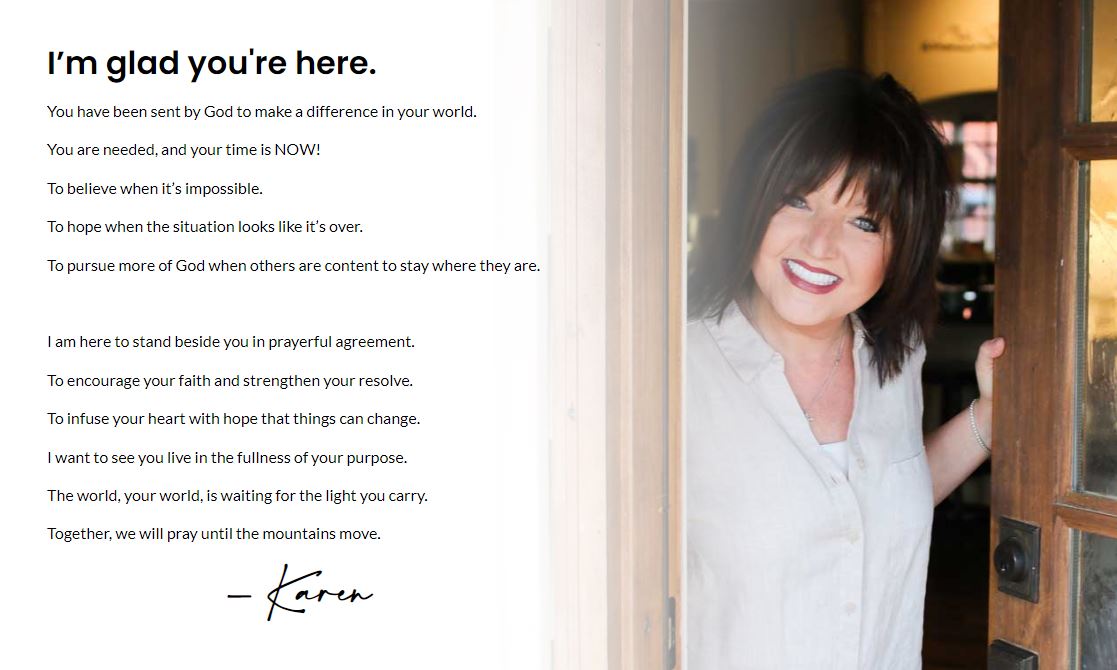
Today on TruLight Radio XM

TruLight Radio XM 24/7
Program
GMT / UTC +2
00:15 Words to Live By Testimonies
01.15 Science Scripture and Salvation
02.15 Ground Works
04.00 Gospel Concert of the Day
05.00 The Daren Streblow Comedy Show
5:55 It is Today devotional
6:00 Gaither Homecoming Morning Show
7:15 Discover the Word
8.15 Destined for Victory
8:55 Science Scripture and Salvation
9:00 Holy Spirit Hour – Normally Sermons
10:15 Hope of the Heart
11:15 Unshackled
11.45 Words to Live By
12:15 Truth for Life
13:15 Living on the Edge with Chip Ingram
14:15 Focus on the Family
15:00 Kids Hour
16:00 In Touch with Dr. Charles Stanley
16:30 Groundwork
17:15 Live in the Light
18:15 Renewing your Mind
19:00 Gaither Homecoming Show
20:15 Growing Hope
21:15 Adventures in Odyssey Radio Drama
21:45 Bible Reading
22:15 Night-sounds
23.00 Good Old Country Gospel / Rhema Gospel Express
VISIT THE WEBSITE
https://TruLightRadioXM.org.za
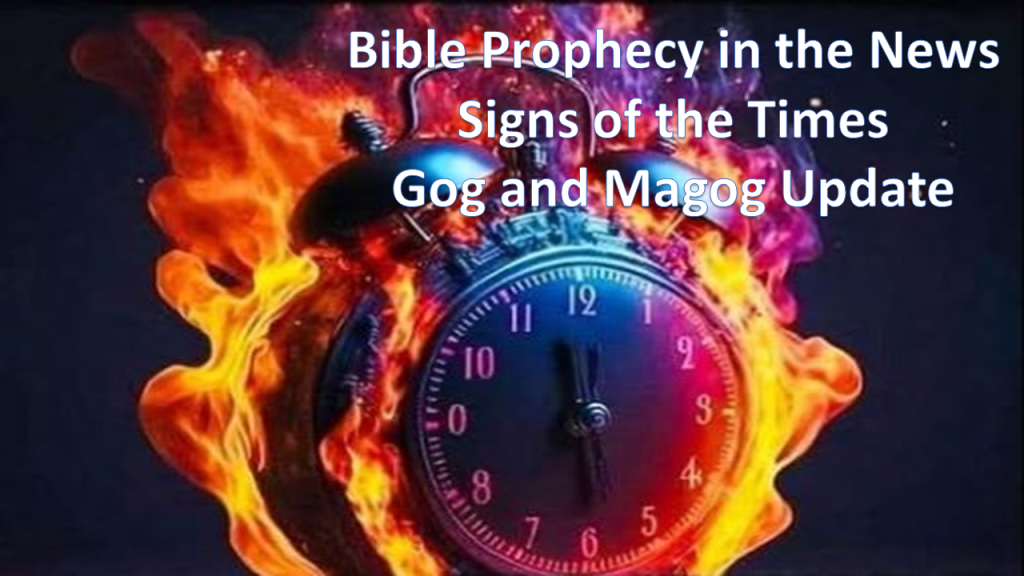
Bible Prophecy in the News
Iranian Nuclear Chief: ‘If I Am Ordered to Build a Nuclear Bomb, I Will Do It’
Former Iranian nuclear chief Fereydoon Abbasi warns that now is the time for “Zionists” to leave Israel.
Signs of the Times
‘WE GOT HIM’ – Netanyahu Confirms Killing Mohammed Sinwar

The strike, involving approximately 40 bunker-buster bombs, each weighing about a ton, was designed to disrupt Hamas’s command structure and pave the way for future ground operations.
In a dramatic address to the Knesset yesterday, Israeli Prime Minister Benjamin Netanyahu announced a major victory in the ongoing war against Hamas, confirming the elimination of Mohammed Sinwar, the de facto leader of the terrorist group in Gaza.
“We have eliminated Mohammed Deif, Yahya Sinwar, and Mohammed Sinwar,” Netanyahu declared.
The operation, conducted on May 4, 2025, beneath the European Hospital in Khan Younis, is a critical blow to the group, which continues to hold 58 Israeli hostages in Gaza’s sprawling tunnel network.
The Operation: A Surgical Strike
The IDF’s operation on May 4, 2025, targeted a command-and-control center hidden in a tunnel complex under the European Hospital in Khan Younis, southern Gaza.
Acting on a “golden piece of intelligence” obtained after the release of hostage Edan Alexander, the IDF and Shin Bet tracked the movements of Hamas’s top military leadership.
The intelligence pinpointed Mohammed Sinwar, who had assumed control of Hamas’s military wing after the July 2024 killing of Mohammed Deif and the October 2024 assassination of his brother, Yahya Sinwar.
Gog and Magog Update
‘YES I DID’: Trump Confirms Warning Netanyahu About Attacking Iran
President Trump stated that nuclear negotiations are progressing well and that a military strike would be inappropriate at this time, while clarifying that military action remains on the table—saying that one phone call could change everything.
Places in the Bible
Bethany Beyond the Jordan on the way to Heaven
The Place Jesus Ascended to Heaven – Ascension Day
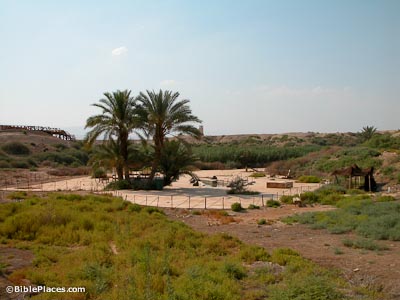
Wadi Gharrar with Baptismal Area
Wadi Gharrar is a small tributary of the Jordan River that is fed by about five springs. Tradition holds that these springs provided the water that was used by John the Baptist for baptizing. Those who support this tradition note that (1) “Bethany beyond the Jordan” was not necessarily a location on the river itself; (2) this site is closely connected with the river; and (3) it was unlikely that a swiftly flowing river like the Jordan would have been used for frequent baptisms.
Chapels
Fifty yards from the Jordan River, the Byzantines built three churches here to commemorate Jesus’s baptism by John. The earliest church was built on stilts because of flooding. This site is located near the southern end of the Jordan River, across from Jericho.

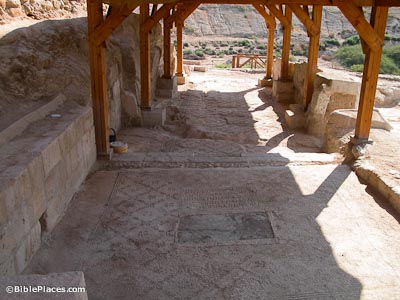
Rhotorios Monastery
Despite the early tradition associated with this site, its identification as “Bethany beyond the Jordan” is probably incorrect. Instead, the northern Bethany in the territory of Herod Philip fits a number of points in the New Testament record. It is possible that Jesus was baptized in the southern part of the Jordan River (near Jericho) and, after His temptation, He met John in the region of the northern Bethany.
Elijah’s Hill
Byzantine tradition connected Elijah’s ascension into heaven (in a whirlwind, at the appearance of a chariot of fire) with the same area as John’s baptisms. Scripture only says that Elijah was taken to heaven on the other side of the Jordan. The 6th-century pilgrim Theodosius refers to this hill, called at the time “Hermon.” A number of Christian buildings were erected at Elijah’s hill, including the Rhotorios Monastery, the Cave Chapel, and the “Arch Church.”
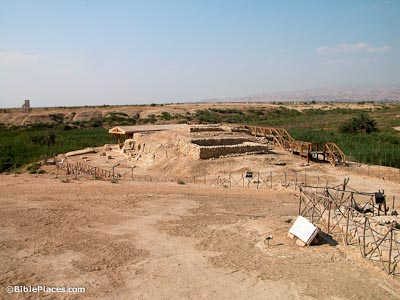

The “Pride” of the Jordan
The thickets surrounding the Jordan are referred to in scripture as the “pride” of the Jordan (Zech 11:3). Especially prevalent in this growth are tamarisk, willow, and Euphrates poplar trees. Since the growth is so thick, wild animals find refuge in this area. Nineteenth-century explorers reported seeing lions, tigers, bears, hyenas, jackals, and otters. Jeremiah used the image of a lion coming up from the Jordan’s thickets in his prophecies (Jer 49:19; 50:44).
Jordan River
Because large quantities of water are taken from the sources of the Jordan by the countries of Israel and Jordan, the river today is a small, winding, dirty stream that makes its way to the Dead Sea. The river winds so much on its journey from the Sea of Galilee to the Dead Sea that the entire course runs about 130 miles (210 km) instead of the 60 miles (96 km) it would take if it ran straight.
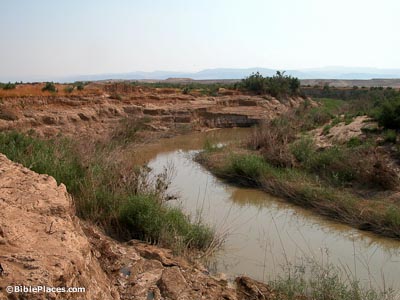
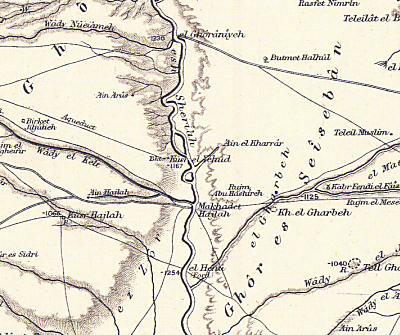
Survey of Eastern Palestine
This map shows the area of the southern end of the Jordan River in the 1880s, as recorded by the Palestine Exploration Fund. This map is included in high resolution in the Survey of Western Palestine: The Maps collection.
TruLight Ministry News

TruLight Ministries orders from God since 2012 . Teach Them , Comfort Them and Warn Them!
////////////
TruLight Ministries opdrag vanaf God sedert 2012. Leer hulle, Troos hulle en Waarsku hulle!
Pastoor Dirk se Audio Lering : Eindtyd Studie 9 van 11 .
TruLight School of Theology have started with Its daily Bible Study – Pastor Counselling Certificate – we are Starting with 36 Studies with 10 Studies per Topic from 1st of April 2025 – Over the Next 2 Years we will Include One Daily Study per Topic on this Platform. The Daily Manna Bible Study will be Available in English and Afrikaans!
We will Start with a 68 week Study on “Know Your Bible” Daily Bible Summaries of every Chapter in the Bible! From the Old Testament to the New Testament , from Genesis to Revelation 66 Books of the Bible.
Started 1st April 2025
This is our Study Principals:
SOAP
Scripture: Read a short passage out loud.
Observation: What do you notice about the verses?.
Application: How can you apply this to your life?.
Prayer: Pray about what you’ve learned.
REAP
Read: Read the passage carefully.
Engage: Ask questions about the passage.
Apply: Think about how the passage applies to your life.
Pray: Pray about what you’ve learned.
Introduction to the Bible – Bible Summary
Summary of the Book of
Ephesians
Author: Ephesians 1:1 identifies the author of the Book of Ephesians as the apostle Paul.
Date of Writing: The Book of Ephesians was very likely written between A.D. 60-63.
Purpose of Writing: Paul, writing from a Roman prison, intended that all who long for
Christlike maturity would receive this writing. Enclosed within the Book of Ephesians is
the discipline needed to develop into true children of God. Furthermore, a study in
Ephesians will help to fortify and to establish the believer so he can fulfill the purpose
and calling God has given. The aim of this epistle is to confirm and to equip a maturing
church. It presents a balanced view of the body of Christ and its importance in God’s
economy.
Key Verses:
Ephesians 1:3: “Praise be to the God and Father of our Lord Jesus Christ, who has
blessed us in the heavenly realms with every spiritual blessing in Christ.”
Ephesians 2:8-10: “For it is by grace you have been saved, through faith—and this not
from yourselves, it is the gift of God—not by works, so that no one can boast. For we are
God’s workmanship, created in Christ Jesus to do good works, which God prepared in
advance for us to do.”
Ephesians 4:4-6: “There is one body and one Spirit—just as you were called to one hope
when you were called—one Lord, one faith, one baptism; one God and Father of all, who
is over all and through all and in all.”
Ephesians 5:21: “Submit to one another out of reverence for Christ.”
Ephesians 6:10-11: “Finally, be strong in the Lord and in his mighty power. Put on the
full armor of God so that you can take your stand against the devil’s schemes.”
Brief Summary: Doctrine occupies the greatest portion of the Book of Ephesians. Half
of the teaching in this epistle relates to our standing in Christ, and the remainder of it
affects our condition. All too often those who teach from this book bypass all the
foundational instruction and go directly to the closing chapter. It is this chapter that
emphasizes the warfare or the struggle of the saints. However, to benefit fully from the
contents of this epistle, one must begin at the beginning of Paul’s instruction in this
letter.
First, as followers of Christ, we must fully understand who God declares us to be. We
must also become grounded in the knowledge of God’s accomplishment for all
humanity. Next, our present existence and walk must become exercised and
strengthened. This must continue until we no longer totter or stagger back and forth
with every spirit of teaching and subtlety of men.
Paul’s writing breaks down into three main segments. (1) Chapters one through three
introduce principles with respect to God’s accomplishment. (2) Chapters four and five
put forth principles regarding our present existence. (3) Chapter six presents principles
concerning our daily struggle.
Connections: The primary link to the Old Testament in Ephesians is in the startling (to
the Jews) concept of the church as the body of Christ (Ephesians 5:32). This amazing
mystery (a truth not previously revealed) of the church, is that “the Gentiles are heirs
together with Israel, members together of one body, and sharers together in the
promise in Christ Jesus” (Ephesians 3:6). This was a mystery completely hidden from the
Old Testament saints (Ephesians 3:5, 9). The Israelites who were true followers of God
always believed they alone were God’s chosen people (Deuteronomy 7:6). Accepting
Gentiles on an equal status in this new paradigm was extremely difficult and caused
many disputes among Jewish believers and Gentile converts. Paul also speaks of the
mystery of the church as the “bride of Christ,” a previously unheard-of concept in the
Old Testament.
Practical Application: Perhaps more than any other book of the Bible, the Book of
Ephesians emphasizes the connection between sound doctrine and right practice in the
Christian life. Far too many people ignore “theology” and instead want to only discuss
things that are “practical.” In Ephesians, Paul argues that theology is practical. In order
to live out God’s will for us in our lives practically, we must first understand who we are
in Christ doctrinally.
Inleiding tot die Bybel – Bybel Samevatting
Opsomming van die boek
Efesiërs
Skrywer: Efesiërs 1:1 identifiseer die skrywer van die boek Efesiërs as die apostel Paulus.
Datum van Skrywe: Die Boek van Efesiërs is heel waarskynlik tussen 60-63 nC geskryf.
Doel van skrywe Paulus, wat uit ‘n Romeinse tronk geskryf het, het bedoel dat almal wat
verlang na Christelike volwassenheid, hierdie skrif sou ontvang. Ingesluit in die Boek van
Efesiërs is die dissipline wat nodig is om te ontwikkel tot ware kinders van God. Verder
sal ‘n studie in Efesiërs help om die gelowige te versterk en te vestig sodat hy die doel
en roeping wat God gegee het kan vervul. Die doel van hierdie brief is om ‘n volwasse
kerk te bevestig en toe te rus. Dit bied ‘n gebalanseerde siening van die liggaam van
Christus en die belangrikheid daarvan in God se ekonomie.
Sleutelverse:
Efesiërs 1:3 : “Geloofd sy die God en Vader van onse Here Jesus Christus, wat ons in die
hemele geseën het met elke geestelike seëning in Christus.”
Efesiërs 2:8-10 : “Want uit genade is julle gered, deur die geloof—en dit nie uit julleself
nie, dit is die gawe van God—nie uit die werke nie, sodat niemand kan roem nie, want
ons is God se maaksel. , geskape in Christus Jesus om goeie werke te doen wat God
vooraf vir ons voorberei het om te doen.”
Efesiërs 4:4-6 : “Daar is een liggaam en een Gees—soos julle geroep is tot een hoop toe
julle geroep is—een Here, een geloof, een doop, een God en Vader van almal, wat oor
almal is en deur alles en in almal.”
Efesiërs 5:21 : “Onderwerp aan mekaar uit eerbied vir Christus.”
Efesiërs 6:10-11 : “Wees ten slotte sterk in die Here en in sy magtige krag. Trek die volle
wapenrusting van God aan, sodat julle stelling kan neem teen die planne van die
duiwel.”
Kort opsomming: Leerstellings beslaan die grootste gedeelte van die boek Efesiërs. Die
helfte van die lering in hierdie sendbrief hou verband met ons stand in Christus, en die
res daarvan beïnvloed ons toestand. Al te dikwels omseil diegene wat uit hierdie boek
onderrig al die grondliggende onderrig en gaan direk na die slothoofstuk. Dit is hierdie
hoofstuk wat die oorlogvoering of die stryd van die heiliges beklemtoon. Om egter ten
volle te baat by die inhoud van hierdie brief, moet ‘n mens by die begin van Paulus se
opdrag in hierdie brief begin.
Eerstens, as volgelinge van Christus, moet ons ten volle verstaan wie God ons verklaar
om te wees. Ons moet ook gegrond raak in die kennis van God se prestasie vir die hele
mensdom. Vervolgens moet ons huidige bestaan en wandel geoefen en versterk word.
Dit moet aanhou totdat ons nie meer wankel of heen en weer wankel met elke gees van
lering en subtiliteit van mense nie.
Paulus se skrywe verdeel in drie hoofsegmente. (1) Hoofstukke een tot drie stel
beginsels met betrekking tot God se prestasie bekend. (2) Hoofstukke vier en vyf stel
beginsels aangaande ons huidige bestaan uiteen. (3) Hoofstuk ses bied beginsels aan
aangaande ons daaglikse stryd.
Verbindings: Die primêre skakel na die Ou Testament in Efesiërs is in die verrassende
(vir die Jode) konsep van die kerk as die liggaam van Christus ( Efesiërs 5:32 ). Hierdie
wonderlike verborgenheid (‘n waarheid wat nie voorheen geopenbaar is nie) van die
kerk, is dat “die heidene saam met Israel erfgename is, lede van een liggaam en saam
deelgenote aan die belofte in Christus Jesus” ( Efesiërs 3:6 ). Dit was ‘n raaisel wat
heeltemal verborge was vir die Ou-Testamentiese heiliges ( Efesiërs 3:5 , 9 ). Die
Israeliete wat ware volgelinge van God was, het altyd geglo dat hulle alleen God se
uitverkore volk was ( Deuteronomium 7:6 ). Om heidene op ‘n gelyke status in hierdie
nuwe paradigma te aanvaar, was uiters moeilik en het baie geskille onder Joodse
gelowiges en heiden-bekeerlinge veroorsaak. Paulus praat ook van die misterie van die
kerk as die “bruid van Christus”, ‘n voorheen ongehoorde konsep in die Ou Testament.
Praktiese toepassing: Miskien meer as enige ander boek van die Bybel, beklemtoon die
Boek van Efesiërs die verband tussen gesonde leer en regte praktyk in die Christelike
lewe. Veels te veel mense ignoreer “teologie” en wil eerder net dinge bespreek wat
“prakties” is. In Efesiërs argumenteer Paulus dat teologie prakties is. Om God se wil vir
ons prakties in ons lewens uit te leef, moet ons eers leerstellig verstaan wie ons in
Christus is.
We are Currently reading and Listening to the Bible, 3 Chapters a Day !
The total number of chapters in the Bible is 1,189. There are 929 chapters within 39 books of the Old Testament and 260 chapters within the 27 books of the New Testament.
Exodus 16 / 17 / 18 English – Follow the Reading in Your Bible.
Eksodus 16 / 17 / 18 Afrikaans – Volg die Leser in u Bybel.
Share this Feeding of Manna with your Friends and Family. just click on the Social Media icon and share !